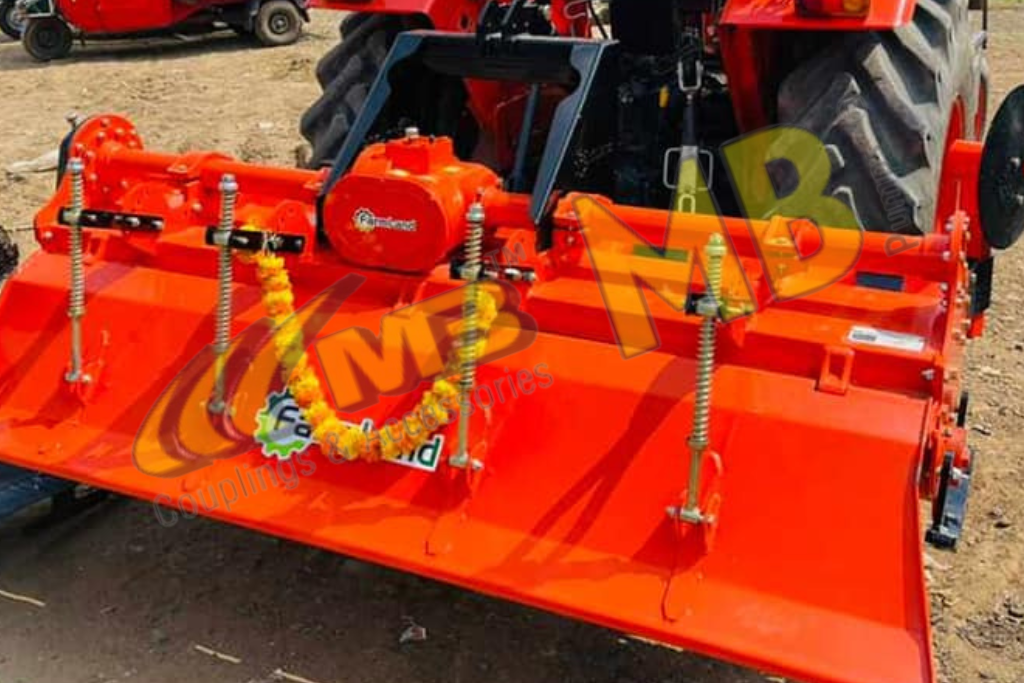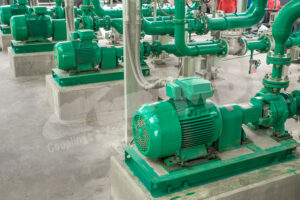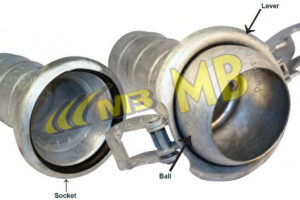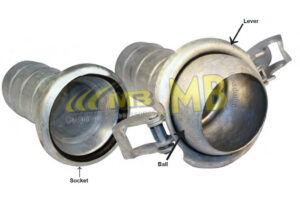The days of manually tilling, excavating, and ploughing were long gone in the agricultural industry. A revolutionary beginning to a new era of agricultural farming was the invention of machine-driven tools that facilitate land preparation, such as the rotavator. This meant bidding adieu to the backache, mental strain, and physical strain caused by the manual labour involved in agricultural farming.
A rotavator is a powered device that prevents and controls crop diseases and pest invasion by using spinning blades to prepare the field and create the greatest possible soil conditions. To manipulate and prepare the soil, a multifunctional agricultural tool such as a rotavator is needed, which mechanically crushes, chops, blends, and levels the soil in a single pass.
This process’s efficacy successfully attests to the crop’s survival and uniformity, enhances the quality of the soil, water, and air, and makes soil conservation easier. However, rotavators come in a wide range of varieties that can be used according to the area’s size, soil type, and power supply. Get information from the best Rotavator Manufacturer India.
Rotavator Assembly:
This motorised device fulfils numerous uses and hence performs numerous tasks. To comprehend the importance of rotary tillers, we must first delve into the nuances and comprehensive dissection of its different components and their corresponding proficiencies.
A rotavator consists of different parts such as:
- separate top mast
- A gearbox with one or more speeds
- Flange for chain or gear cover portion
- Razors
- Cardan shaft
- rotor shaft
- trailing board
- Cover and frame
- Skids with adjustable depth
- Adjustable offset frame
Check out Rotavator Assembly Basics Video Here
The independent top mast is used to transfer power from the tractor’s power take-off (P.T.O.) to the input rotavator shaft. A rotavator is characterised as either tractor drawn or engine operated based on the power employed. Through the employment of its associated blades and tines, the power-driven shaft is used to chop through the dirt and debris. A rotavator’s blades are its main component since they propel the device while it mixes the leftover soil and prepares the seedbed. These blades are often L shaped because they accomplish the goal of eliminating weeds with the highest level of effectiveness. It is simple to modify the rotavator to meet one’s farming requirements. It is possible to modify the location of the back cover and the level of soil pulverisation. To find the gap between the dirt and the blade, the depth skids can also be adjusted.
Use of Rotavator :
- Quick preparation of the seedbed and lower draft compared to conventional tillage techniques.
- When rotary tillers are utilised, traditional cultivators can prepare soil with 30%–35% less time and labour.
- No matter the size of the farm, rotavators will always be present due to improved job quality, decreased fuel consumption, and lower operating costs.
- Both primary and secondary tillage can use it.
- A rotavator spins the soil to provide the crops with the maximum quantity of nutrients, which boosts agricultural output and, eventually, profits.
- It can be used for multifarious purposes too such as shallow cultivation and weed control, making ita desirable and an integral part of the farming process.
- It can be applied to any soil texture since it increases aeration and soil porosity.
- Numerous crops, including sugar cane, cotton, and bananas, to mention a few, can be grown with it.
- This power-operated tool not only helps to preserve soil moisture but also makes the labor-intensive and deft work that was previously required to prepare the soil easier to perform. This makes the entire process more efficient and controllable.
- The rotavator is a necessary tool in today’s world because of the various models of rotary tillers and their range of uses.
Types of Rotavator
A rotavator is a flexible piece of equipment that can be used on a variety of soil types because it can be used for both primary and secondary tillage. A large selection of rotavator models with varying functionality is available from MB Exports. Here are a few examples of rotavator types:
Light Duty
Mini-series and hobby series rotary tillers are among the light-duty rotavators that are perfect for tilling the soil in allotments, tiny vegetable gardens, garden borders, and small gardens.· The little, lightweight rotavator is ideal for tending to and cleaning up tiny gardens.
- At four to five inches deep, it can aerate and loosen the soil.
- The best equipment for crushing soil and controlling weeds.
Medium Duty
The medium-duty rotavators, which come with normal series rotary tillers, are perfect for controlling weeds, loosening the soil, and promoting water absorption around plants in nurseries, greenhouses, gardens, and allotments.
- Even under the most difficult circumstances, the medium series rotavator can function.
- It is possible to get ready to seed on the previously compacted uncultivated ground.
- Up to six inches of soil can be made more pliable and aerate by it.
- Without harming the crops or plants, the medium-duty rotavators can operate in close proximity to them.
- These medium-duty rotary tillers are simple to use and help you minimise the amount of labour needed to cultivate the land.
Heavy Duty
The best rotavators for farmers to use when working across big areas of land are heavy duty models. The Gold Rotary Tiller from MB Exports’ heavy-duty rotavator line has two rotor revolutions per minute (rpm) to accommodate varying soil types and applications.
- Able to aerate and loosen soil to a depth of 7 inches.
- guarantees a high-performing seedbed that is precisely levelled and finished under all operating circumstances.
- Rotor speed is easily controllable.
Rotavator Maintenance:
In order to maintain a long, healthy, and sound life, rotavators provide adequate care and maintenance.
Rotary tiller is used to dig up dirt, its engine oil and filter need to be changed on a regular basis. This needs to be done if the oil is visibly unclean, after 50 hours of use, or at least once a year. To guarantee maximum efficiency, the air filter must be cleaned on a regular basis. And the other components must be washed after each usage. In addition to gaining financial rewards from the machinery, routine upkeep and inspection of the agricultural implement would ensure the safety of all persons operating it.
Safety of Rotavator :
When operating a rotavator or any other agricultural machinery, there are a lot of factors to take into account:
- Only those who have received the appropriate training, supervision, and instruction should be allowed to operate the apparatus.
- Even if the machinery is not attached to the tractor, kids still need to be kept well away from it.
- It is not advisable to wear clothing that fits loosely since it could become trapped in moving pieces.
- Prior to operation, make sure the following is checked:
- The drive shaft and hitch pins are firmly fastened.
- There are no damaged or worn components.
- The work space needs to be free of people and animals in particular.
- Till the tractor is turned off, avoid touching the rotavator’s blades or any other component.
Multi-functional use of a Rotavator:
Various models provide varying functionalities. When it comes to power and functions, there are many different kinds of rotary tillers that are adaptable. The following tasks can be completed using a rotavator:
- chopping and blending the produce
- Activities related to tilling and planting
- fertilisers and other chemicals being added
- cultivation of row crops
- control of weeds
For more information consult Manufacturer And Exporters Of Best Quality Rotavator in India.




